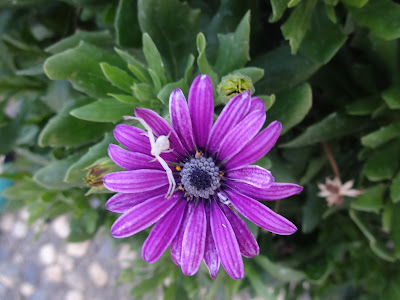According to the Merriam-Webster Dictionary, to be “deviant” is to stray or deviate from an accepted norm. When we think of someone being deviant, it often leads us to think of someone who is trying to cause trouble or who is simply up to no good.
With plants, it is a bit different. There is often a deviation, much like a statistical deviation, that can either be greater or lesser, depending upon how different from each other a specific plant’s parents and grandparents were from itself. Most modern agriculture looks at deviation as a very negative thing. Since the early 1900s, the growing agricultural industry has worked to develop vegetables that are more and more uniform so that when you go into the grocery store you know you will get a completely round, red, average-sized tasteless slicing tomato.
However, deviation was not always viewed as such a negative thing. If it were not for deviation, most of the plants that we eat from the brassica family would never exist. In fact, it was the very fact that plants like wild mustard have some degree of variance that allowed early farmers to select and cultivate otherwise unproductive plants into the many vegetable varieties we have.
So, how much variance should we tolerate, as gardeners and food consumers? Though this is a purely hypothetical question, it is one that continues to pit dedicated gardeners and scientists (who desire to preserve unique plant varieties) against big agriculture that promotes and sells consistency (though they take advantage of huge amounts of deviation in order to continue to develop their products). As for me, I prefer a small amount of deviation so that I do not have to wonder about the size, shape, color, and flavor of the fruit along with the growing habits of each cucumber plant each time I plant a seed. That being said, deviation can be incredibly good for even the less-tolerant gardener. For example: what if the one plant that looks a little different from your other plants survives a devastating blight? All of a sudden the plant that was a nuisance is now the only one you want to save seed of.
The main reason why I bring this topic up is because each seed saver and home gardener should really think about what they value in the crops they grow so that they will ensure that they and those who follow will be able to continue to have food and variety. Perhaps God made plants and animals to have some amount of deviation so that they could thrive and bless the world with majestic beauty. Perhaps a healthy dose of deviation is truly a blessing.
 |
| How many carosello cucumbers do you see? (Answer at the end) |
With plants, it is a bit different. There is often a deviation, much like a statistical deviation, that can either be greater or lesser, depending upon how different from each other a specific plant’s parents and grandparents were from itself. Most modern agriculture looks at deviation as a very negative thing. Since the early 1900s, the growing agricultural industry has worked to develop vegetables that are more and more uniform so that when you go into the grocery store you know you will get a completely round, red, average-sized tasteless slicing tomato.
 |
| Carosello Tarantino |
 |
| Carosello Tarantino, cut to expose inside flesh. |
However, deviation was not always viewed as such a negative thing. If it were not for deviation, most of the plants that we eat from the brassica family would never exist. In fact, it was the very fact that plants like wild mustard have some degree of variance that allowed early farmers to select and cultivate otherwise unproductive plants into the many vegetable varieties we have.
 |
| What will these female flowers from the same plant become? |
So, how much variance should we tolerate, as gardeners and food consumers? Though this is a purely hypothetical question, it is one that continues to pit dedicated gardeners and scientists (who desire to preserve unique plant varieties) against big agriculture that promotes and sells consistency (though they take advantage of huge amounts of deviation in order to continue to develop their products). As for me, I prefer a small amount of deviation so that I do not have to wonder about the size, shape, color, and flavor of the fruit along with the growing habits of each cucumber plant each time I plant a seed. That being said, deviation can be incredibly good for even the less-tolerant gardener. For example: what if the one plant that looks a little different from your other plants survives a devastating blight? All of a sudden the plant that was a nuisance is now the only one you want to save seed of.
 |
| Will they look like the Meloncella Fasciata? |
 |
| Or will it look like this? |
The main reason why I bring this topic up is because each seed saver and home gardener should really think about what they value in the crops they grow so that they will ensure that they and those who follow will be able to continue to have food and variety. Perhaps God made plants and animals to have some amount of deviation so that they could thrive and bless the world with majestic beauty. Perhaps a healthy dose of deviation is truly a blessing.
 |
| And the answer is.... 6! |
































